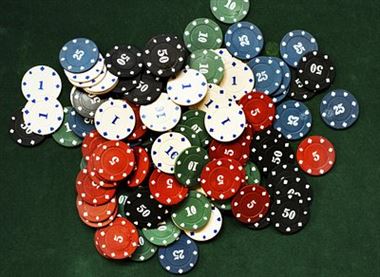“Unlocking the Secrets of Hand Ranges: A Strategic Approach to Poker” is a comprehensive guide that delves into the concept of hand ranges in poker and provides players with a strategic framework to analyze and exploit their opponents’ ranges effectively. By understanding hand ranges, players can make more informed decisions, improve their overall gameplay, and increase their chances of success at the poker table. This guide explores the fundamentals of hand ranges, discusses various factors that influence them, and offers practical tips and techniques to develop a solid hand range strategy. Whether you are a beginner or an experienced player, this guide aims to enhance your understanding of hand ranges and equip you with the tools to make better decisions in poker.
Understanding the Importance of Hand Ranges in Poker Strategy
Understanding the importance of hand ranges in poker strategy is essential for several reasons. Firstly, it allows players to make more accurate reads on their opponents. By considering the range of hands that an opponent could have, players can narrow down the possibilities and make more educated guesses about their opponents’ holdings. This information can be invaluable when deciding whether to bet, call, or fold.
Secondly, understanding hand ranges helps players make better decisions about their own hands. By considering the range of hands that they could have, players can determine the strength of their hand relative to their opponents’ likely holdings. This knowledge allows players to make more strategic bets and raises, maximizing their chances of winning the pot.
To understand hand ranges, players must consider several factors. Firstly, they must analyze their opponents’ actions. By observing how an opponent plays their hand, players can start to narrow down the range of hands that they could have. For example, if an opponent raises pre-flop and then bets aggressively on the flop, they are likely to have a strong hand. Conversely, if an opponent checks and calls, they may have a weaker hand or a draw.
Players must also consider the information available to them. This includes the community cards on the board and any previous actions in the hand. By combining this information with their observations of their opponents’ actions, players can start to build a range of possible hands for each opponent.
Once players have a range of possible hands for their opponents, they can start to make more informed decisions. For example, if a player believes that their opponent has a strong hand, they may choose to fold a marginal hand rather than risk losing a large portion of their stack. On the other hand, if a player believes that their opponent has a weak hand, they may choose to bluff and try to force their opponent to fold.
It is important to note that hand ranges are not fixed and can change throughout a hand. As more information becomes available, players must adjust their range of possible hands for each opponent. This requires constant analysis and reassessment of the situation.
Analyzing Hand Ranges: How to Narrow Down Your Opponents’ Possible Hands
To begin with, it is important to understand what a hand range is. A hand range refers to the range of hands that a player could have based on their actions and the information available. It is not a specific hand, but rather a collection of possible hands that a player might hold. By analyzing your opponents’ actions, you can start to narrow down their hand range and make more accurate assumptions about the strength of their hand.
One of the first steps in analyzing hand ranges is to observe your opponents’ betting patterns. Pay close attention to how they bet in different situations and try to identify any patterns or tendencies. For example, if a player consistently raises pre-flop with strong hands, you can start to narrow down their range to premium holdings like pocket aces or kings. On the other hand, if a player frequently limps into pots, their range may include a wider variety of hands, including weaker holdings.
Another important factor to consider when analyzing hand ranges is the position of your opponents. Players in early position are more likely to have stronger hands, as they have to act before players in later positions. Conversely, players in late position have more information available to them and can afford to play a wider range of hands. By taking into account the position of your opponents, you can further narrow down their possible hand ranges.
Furthermore, it is crucial to consider the board texture when analyzing hand ranges. The community cards on the board can greatly impact the range of hands that your opponents are likely to have. For example, if the board is showing three low cards, it is less likely that your opponent has a strong hand like a set or two pair. Conversely, if the board is coordinated and contains multiple high cards, your opponent’s range may include stronger hands. By carefully analyzing the board texture, you can eliminate certain hands from your opponents’ range and make more accurate assumptions about the strength of their hand.
Lastly, it is important to consider the specific actions your opponents take throughout the hand. Did they check, bet, raise, or fold? Each action provides valuable information about the strength of their hand. For example, if a player checks on the flop and then raises on the turn, it is likely that they have a strong hand that improved on the turn card. By paying close attention to your opponents’ actions, you can further narrow down their hand range and make more informed decisions.
Exploiting Hand Ranges: Maximizing Your Profits in Poker
Understanding hand ranges is crucial because it allows players to make informed decisions based on the likelihood of their opponents’ hands. By analyzing the actions and betting patterns of their opponents, players can narrow down the possible range of hands they might have. This information is invaluable as it helps players make more accurate predictions and adjust their own strategies accordingly.
One effective way to exploit hand ranges is by using the concept of polarized ranges. A polarized range consists of strong hands and weak hands, with very few medium-strength hands in between. By betting aggressively with their strong hands and bluffing with their weak hands, players can put their opponents in difficult situations. This strategy forces opponents to make tough decisions and often leads to them making mistakes, which can be capitalized on for maximum profit.
Another strategy to exploit hand ranges is by using the concept of range merging. Range merging involves playing certain hands in a way that makes it difficult for opponents to accurately determine the strength of one’s hand. By occasionally playing strong hands in a deceptive manner and mixing in bluffs, players can keep their opponents guessing and make it harder for them to exploit their own hand ranges. This strategy can be particularly effective against observant opponents who rely heavily on hand reading.
In addition to polarized ranges and range merging, players can also exploit hand ranges by utilizing blockers. Blockers are cards that reduce the likelihood of opponents having certain hands. For example, if a player holds two aces, it significantly reduces the chances of their opponents having pocket aces. By considering the blockers in their own hand, players can make more accurate assessments of their opponents’ possible hand ranges and adjust their strategies accordingly. This knowledge can be used to bluff more effectively or make well-timed value bets.
It is important to note that exploiting hand ranges is not a one-size-fits-all strategy. It requires adaptability and the ability to read and adjust to different opponents. Skilled players are constantly analyzing their opponents’ actions, looking for patterns and tendencies that can help them narrow down their hand ranges. By doing so, they can make more informed decisions and exploit their opponents’ weaknesses.
Advanced Techniques for Hand Range Analysis in Poker
One of the first steps in analyzing hand ranges is to gather as much information as possible. This includes observing your opponents’ betting patterns, their position at the table, and their previous actions. By paying close attention to these details, you can start to narrow down the range of hands they may be holding.
Once you have gathered enough information, it’s time to start assigning hand ranges to your opponents. This is where advanced techniques come into play. Instead of simply assigning a single hand to your opponent, you should consider all the possible combinations of hands that they could have based on the information you have gathered.
To do this effectively, it’s important to understand the concept of equity. Equity is a measure of the relative strength of a hand or a range of hands. By assigning a range of hands to your opponent, you can calculate the equity of your own hand against that range. This allows you to make more accurate decisions based on the likelihood of winning the hand.
To calculate equity, you can use various tools and software available online. These tools take into account the range of hands you assign to your opponent and calculate the probability of winning, losing, or tying against that range. By using these tools, you can gain a deeper understanding of the potential outcomes of a hand and make more informed decisions.
Another advanced technique for hand range analysis is the concept of blockers. Blockers are cards that you hold in your hand that reduce the likelihood of your opponent having certain hands. For example, if you hold an Ace of spades, it reduces the likelihood of your opponent having a flush draw with spades. By considering the blockers in your hand, you can further narrow down the range of hands your opponent may be holding.
In addition to blockers, it’s important to consider the range of hands that your opponent is likely to play from each position at the table. Different positions have different ranges of hands that are considered playable. By understanding these ranges, you can better assess the strength of your opponents’ hands and make more accurate decisions.
Lastly, it’s important to remember that hand range analysis is not an exact science. It requires a combination of skill, experience, and intuition. As you gain more experience and practice, you will become better at accurately assigning hand ranges and making informed decisions.
Mastering Hand Ranges: Key Skills for Successful Poker Players
One of the first steps in mastering hand ranges is to understand the concept of starting hand ranges. Starting hand ranges are the range of hands that a player is likely to play from a particular position at the table. For example, a player in early position may have a tighter starting hand range, while a player in late position may have a wider range. By understanding these starting hand ranges, players can make more accurate assumptions about the strength of their opponents’ hands.
As the hand progresses, players must also consider the concept of range narrowing. Range narrowing refers to the process of eliminating certain hands from an opponent’s range based on their actions and the information available. For example, if a player raises pre-flop and then continues to bet aggressively on the flop, it is likely that they have a strong hand. By narrowing their range, players can make more accurate decisions about whether to continue in the hand or fold.
Another important aspect of hand ranges is range balancing. Range balancing refers to the idea of having a balanced range of hands in any given situation. This means that a player should have a mix of strong hands, medium-strength hands, and weaker hands in their range. By balancing their range, players can make it more difficult for their opponents to accurately read the strength of their hand. This can lead to more profitable situations and increased success at the poker table.
In addition to understanding hand ranges, successful poker players must also be able to accurately read their opponents’ ranges. This requires careful observation and analysis of their opponents’ actions and betting patterns. By paying attention to how an opponent plays certain hands, players can start to build a picture of their range and make more informed decisions.
Furthermore, understanding the concept of equity is crucial in mastering hand ranges. Equity refers to the share of the pot that a player can expect to win on average based on the strength of their hand. By understanding equity, players can make more accurate decisions about whether to bet, call, or fold in any given situation. This knowledge allows players to maximize their expected value and make more profitable decisions in the long run.
In conclusion, mastering hand ranges is a key skill for successful poker players. By understanding starting hand ranges, range narrowing, range balancing, and equity, players can make more informed decisions and gain a significant edge over their opponents. It is through a strategic approach to hand ranges that players can unlock the secrets of poker and increase their chances of long-term success at the table. So, next time you sit down to play a game of poker, remember to consider hand ranges and take your game to the next level.




